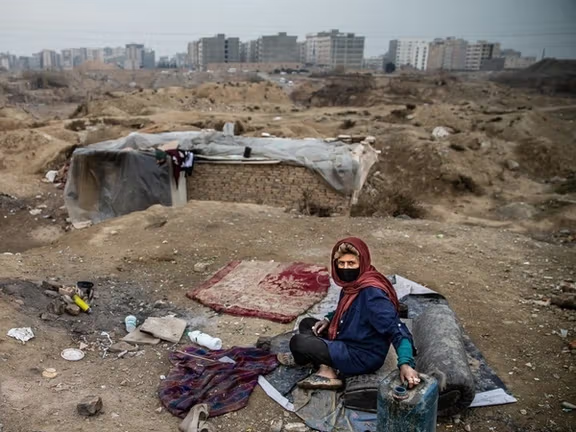Poverty Doubled In Iran In One Year - Welfare Ministry

The Islamic Republic’s Ministry of Cooperatives, Labor, and Social Welfare has warned of a whopping number of middle-class Iranians plunging into poverty in the past few years.

The Islamic Republic’s Ministry of Cooperatives, Labor, and Social Welfare has warned of a whopping number of middle-class Iranians plunging into poverty in the past few years.
According to a report published by ILNA on Monday, one-third of the country’s population is now living in extreme poverty, after the number almost doubled in one year from 2020 to 2021.
It also said that the minimum monthly income needed to stay above the poverty line for a family of four in the previous Iranian year (starting March 21) in Tehran was estimated at 147,000,000 rials (about $500 at the time) and the average for the entire country is estimated to have been about 77,000,000 (about $250). The average for one person is reported to have been about 16,820,000 (about $55).
Although the figures seem far from the realities of life for the people, the data indicate a 50-percent rise in comparison with those of a year earlier, announced by the same source. The report claimed that the figures are extracted from the available data that pertain to the previous Iranian year.
Since then, inflation has risen to almost 50 percent and the national currency has dropped by about 50 percent.
Iran intends to set the minimum monthly salary for the next Iranian year (starting March 21) at 56 million rials, which is about $140 at today’s exchange rate. Iran has one of the lowest minimum wages in the world, but salaries were increasing from 2000-2010 when the minimum wage hit a record high of about $275 in 2010. This coincided with the time when the United Nations Security Council began imposing sanctions to force Tehran to roll back its nuclear program.

The report also said that about one million jobs were lost in the Iranian year corresponding with 2020 due to the Covid-19 pandemic but some jobs were restored in the following year.
Moreover, the average per capita intake of calories – one of the indices of poverty -- has fallen from 2,700 kcal in 2011 to below 2,200 kcal in 2021 due to a very high inflation rate, particularly for food items.
According to a recent report by EcoIran website, as the government lifted import subsidies for essential goods in April 2022, food prices jumped an average of 67.7 percent compared with the same period in the previous year. Food inflation is recorded at above 70 percent in 12 provinces, putting them in a red category, referring to a very critical condition.
In December, member of parliament Behruz Mohebbi-Najmabadi, a member of parliament’s budget committee, said about 20 million people are struggling with extreme poverty, suggesting that about one-fourth of the country’s population are destitute. He mentioned Iran’s zero economic growth in more than a decade as the main reason.
According to official figures released by the interior ministry, in total, around 60 percent of the 84 million Iranians live under the relative poverty line of whom between 20 to 30 million live in "absolute poverty". In 2010, for instance, the number of those living under the absolute poverty line was around 10 million according to government statistics.
Economic failures of the regime are becoming more and more difficult to justify, even given US sanctions. "The main reason for the [economic] problems [in the past ten years] is not just the sanctions. A major part of these were caused by wrong decisions and inefficiency," Supreme leader Ali Khamenei admitted in a speech last year.